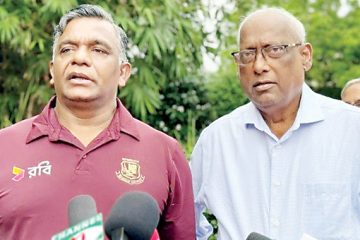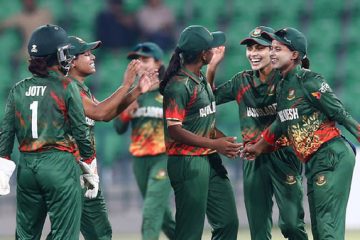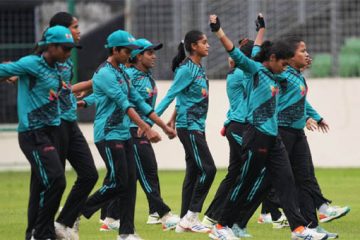If it rains, it’s gone
If you consider its location among chemical factories in one desolate corner of the city, the smell of fumes in its air, the unfinished eastern galleries and the thick seaside grass, there isn’t much right about the Zohur Ahmed Chowdhury Stadium.
But cricket could be played in polluted air, in an industrial area, in front of empty stands, and even on sluggish outfields, but cricket matches are not possible on a wet ground.
Poor drainage system at the stadium forced the abandonment of the fourth Bangladesh-Zimbabwe ODI, more than four years after its first call off, the final game of the Bangladesh-India ODI series. Granted that a hurricane forced the first abandoned game but last Friday, it was bizarre. Rain from Thursday afternoon continued till late evening. When the groundsmen finished work at 10:00pm that night, they were confident that a match, though a curtailed one, could me made possible through another effort early next morning.
But it was a wet beginning on Friday, an hourlong shower at dawn that made sure of more hard work. At around 10:00am, the teams trooped out gingerly, the entrance to the ground proper was muddy and as the first step Mashrafe Bin Mortaza took inside the field, water splashed around. During the entire morning, the sun had peaked through a number of times, but it could still be passed off as a dull day (in terms of light).
By midday, 30 minutes before the match was called off, there was sunshine but the water didn’t go away from the surface.
When asked about this poor drainage facility, Bangladesh Cricket Board’s (BCB) grounds and facilities committee chairman Shafiqur Rahman Munna said that there wasn’t enough time to lift the level of the ground and create the slope so vital for drainage of water.
“We wanted to have a proper drainage system with a 2-foot slope, but for that we would have to dig up all the pitches and lay new ones. In that case the ground would not have any World Cup matches because of the risk involved in playing on new pitches,” he said.
“We have a good drainage system in Dhaka and we are also installing it in Khulna. But we had to drop the idea for Chittagong and Fatullah because of time constraints,” admitted Munna.
The decision of holding World Cup matches in Chittagong was taken in October 2009 and even before that, the same problem came up in 2007 when the India game was called off. The Sher-e-Bangla National Stadium in Mirpur has never had this problem so far, matches being played there an hour or two after long spells of rain. BCB chief executive Manzur Ahmed has already said that large covers, those spanning the entire ground, will be made available for this ground.
To have two distinctive international venues in a country reflects deep-seated carelessness among cricket organisers in this country.
National Sports Council director Abdur Rahman confirmed that lifting the ground level would take time. “Yes they told us to increase the slope, but it takes 6-7 months and then they have to rebuild the pitches. There was little time for the World Cup so it wasn’t undertaken,” he said.
And then there’s the hope among many, including a BCB director, that rain stays away from Chittagong during the World Cup. Talk about wishful thinking.




















